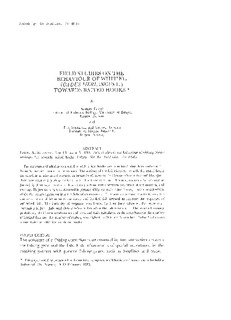| dc.description.abstract | The responses of whiting to a test line with baited hooks were studied during three cruises in the
Trondheimsfjord area in three seasons. The activity of the fish directed towards the baited hooks
increased at sunrise and decreased at sunset in all seasons. In October-November and May-June
there was only one peak of activity, with durations of 8 and 14 hours, respectively, whereas in
June-July there was a period of low activity around noon between two peaks in the morning, and
evening. Higher activity was observed in periods of higher, rather than lower, current, and 80-90%
of the fish swam upstream into the field of observation. There was a decrease in activity over the
course of trials of 60 minutes duration, and hooked fish seemed to increase the responses of
unhooked fish. The intensity of response was lowest in May-June when all fish were ripe,
increasing in June-July and October-November when the fish were spent. The seasonal hooking
probability of different combinations of hook and bait, calculated as the ratio between the number
of hooked fish and the number of rushes, was highest in October-November. Treble hooks were
about twice as effective as single hooks. | en |
